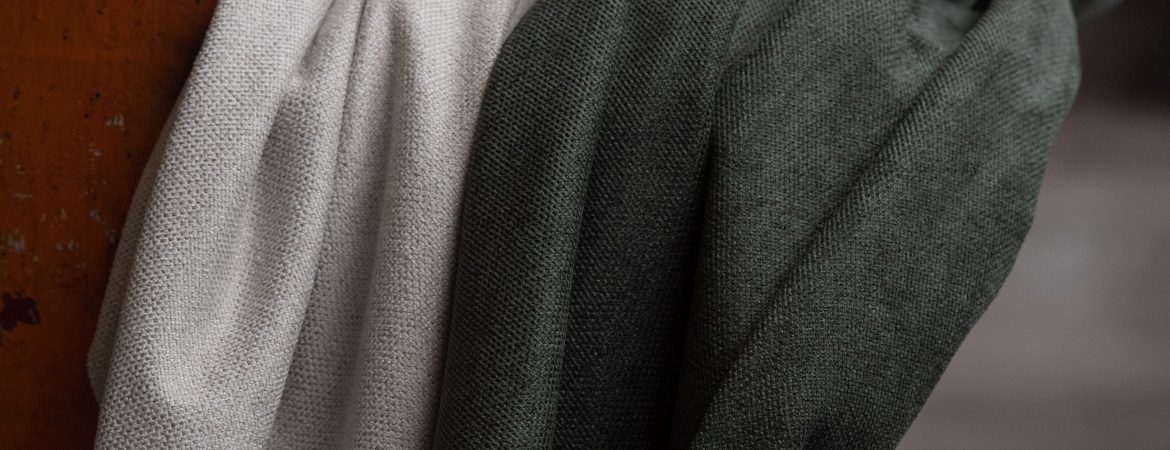
FABRAA commits to CO2 savings and and a range of circular upholstery fabrics.
‘We are setting the bar high’
FABRAA is going to the next level. After having brought sustainable upholstery fabrics made from RPET bottles, polypropylene, and discarded clothing to the market over the past few years, we are fully focussed on achieving our overall goal by 2035: a carbon-neutral and circular product range.
We create new products every year. In 2022, FABRAA launched four new products. The yarns used for fabrics in the Wovenbottles Collection is made from RPET bottles. Cloud, Cyber, Chain, and Europe: a diverse new range. Whereas one fabric might have a durable or multicolour appearance, the other is very soft and voluminous. ‘We respond to the trends that we see on the market,’ explains Bart Smarius, Sustainability Manager at FABRAA and parent company Textaafoam. ‘This has resulted in Cloud, for example, a fabric which is part of the teddy and bouclé trend.’
A carbon-neutral range
In addition to making its range more sustainable, FABRAA is also working towards a circular and carbon-neutral range by 2035. Part of this strategy involves designing the product on a technical level such that it is easily recyclable at the end of its life. We call this Ecodesign or Design for Recycling. Upholstery fabrics are often unable to be recycled as they usually include backings, coatings, and blends. These make it more difficult for products to be recycled. In 2022, we began an internal project, Design for Recycling. The aim of this project is to make recycling easier. Adapting the design without compromising on quality and creativity is a complicated process, especially as we want to keep the cost price as close to that of a traditional fabric as possible. Advances have been made in the field of mechanical and chemical recycling. The ultimate goal is to be able to recycle fibres into comparable yarns, but we are not there yet. Certainly not on a large industrial scale. But the better we design our products, the easier and more efficient this process will be in the end.
Back to the source
Until recently, FABRAA mainly focussed on reducing the impact of yarn production. This was quickly followed by making the supply chain more sustainable and reducing CO2 emissions within the company. This year, FABRAA has begun slowly extending this to the rest of the product range. Smarius: ‘Before, we were mainly concerned with the quality and creativity of our products. We have been expanding it further and taking a deeper look at things on a technical level. We have been researching how we can bring our products back to the source. This resulted in the ‘CIRCO Track Textile Reuse and Recycling II’ programme with which we have started to improve our sustainability alongside fellow businesses in the textiles sector. FABRAA’s question was crystal-clear: how can we ensure that residual waste goes back to the yarn producers so that it can ultimately be recycled into yarns? The project gave us new insights and cross-sector collaboration is now planned to enable a process that is as efficient as possible. We want to be able to help other companies to achieve a zero-waste policy, with solutions for offcuts, for example. The project is still in its early days, but it signals FABRAA’s ambitions to support its customers.
The first steps
The brand wants to be a knowledge partner for clients and partners. On that note, waste management was also an important topic this year. FABRAA joined forces with Frankenhuis to downcycle residual waste. Old samples and fabrics used to be thrown away, but now we recycle them. Smarius: ‘Zero-waste management enables us to reduce waste in and around the building. We try to avoid single-use plastics as much as possible. The bin has been replaced with four bins so we can separate our waste. That means we can recycle our coffee cups. These measures are not about showing off. They help us to raise a more sustainable consciousness within the organisation.